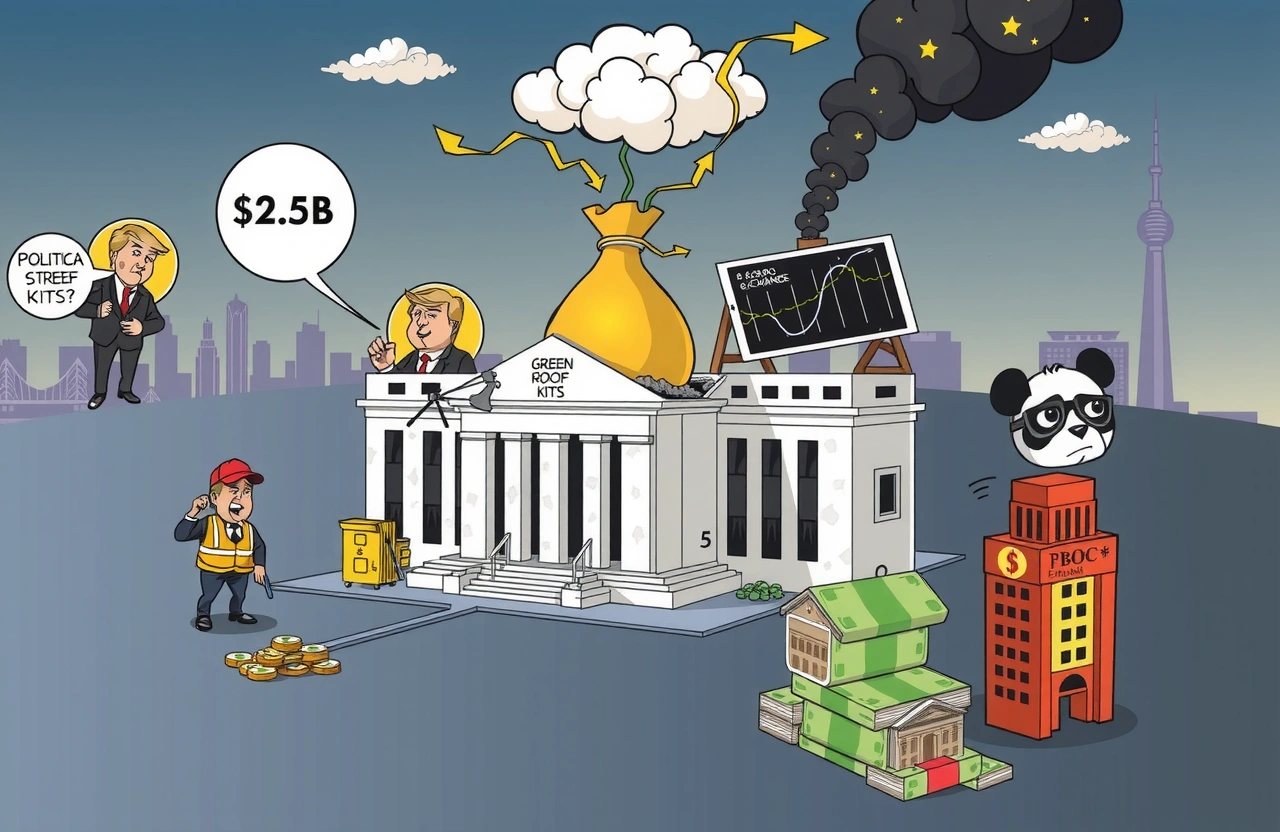The Escalating Renovation Scandal
Amid mounting political pressure and public scrutiny, the Federal Reserve issued an extraordinary defense of its Washington D.C. headquarters renovation on July 13th. The official response comes after President Trump, White House officials, and congressional leaders questioned the project’s ballooning $2.5 billion price tag – a dramatic $600 million increase from initial estimates. This controversial infrastructure project has become the latest flashpoint in tensions between the central bank and its critics. Particularly explosive are rumors circulating about potential leadership changes at the Fed following accusations that Chairman Jerome Powell (鲍威尔) provided misleading testimony to Congress regarding renovation expenditures.
The Political Firestorm
According to reports by Bloomberg Economics, William J. Pulte (威廉·普尔特), Chairman of Fannie Mae and Freddie Mac’s boards, reignited controversy when he publicly endorsed rumors of Powell’s potential resignation on July 11th. Pulte had previously demanded Powell step down over “deceptive” Congressional testimony unrelated to monetary policy decisions. A senior Trump administration official added fuel to the fire by anonymously confirming Powell was “considering resignation” as pressure mounted regarding the Fed’s oversight of the renovation budget.
Decoding the Renovation Details
The Federal Reserve’s comprehensive statement detailed renovations spanning two historic structures: The main headquarters, the Marriner S. Eccles Building (completed 1937), and the adjacent 1951 Constitution Avenue building (built 1932). Both properties carry Washington D.C. historical landmark status, with the latter even listed on the National Register of Historic Places, requiring specialized preservation approaches that significantly impacted costs.
Core Renovation Objectives
- Consolidation of facilities to reduce long-term operational expenses
- Removal of hazardous materials including asbestos and lead paint
- Modernization of mechanical systems while preserving architectural heritage
- Environmental sustainability upgrades like vegetated rooftops
Contrary to criticism portraying lavish spending, Fed architects emphasized conservation efforts: salvaging original marble facades, repairing rather than replacing decorative fountains, and restoring historic elevators. The statement explicitly denied installing VIP amenities reported in media outlets, specifically mentioning there are:
- No executive dining facilities
- No reserved VIP elevators
- No ornamental water features beyond restoring existing elements
Breaking Down Cost Overruns
The Federal Reserve acknowledged the project’s 32% budget increase ($1.9 to $2.5 billion) while outlining three primary reasons for expenditure growth:
Unforeseen Structural Challenges
Significant complications emerged during renovation work, including toxic soil contamination and underground water saturation threatening structural integrity. These discoveries required immediate remediation with specialized engineering solutions drastically increasing expenses.
Design Changes
The National Capital Planning Commission and other regulatory bodies mandated modifications to preserve historical authenticity. Adjustments included sourcing domestically quarried marble matching 1930s materials.
Construction Inflation
Rising labor costs and material prices contributed more than anticipated. The Congressional Budget Office reports U.S. construction inflation rates have consistently outpaced consumer inflation since 2020, validating contractors’ projections.
Responses to Oversight Criticisms
Facing questions about financial management, the Federal Reserve outlined its multilayered accountability framework:
“Our procurement required competitive bids involving contractors from 32 states,” the statement noted, emphasizing transparency provisions including:
- Quarterly Government Accountability Office audits
- Monthly Inspector General expenditure reports
- Congressional oversight committee reviews
The Congressional Backlash
The controversy ignited in April when The Washington Post broke the story about cost increases. Criticism climaxed during June hearings when Senator Tim Scott (R-SC) denounced expenditures:
“When seniors struggle to afford basic necessities, spending billions on federal offices with Versailles-like upgrades sends the worst possible message to taxpayers.”
Chairman Powell acknowledged financial oversight issues while defending the renovation’s necessity:
“Decades of deferred maintenance made essential renovations unavoidable. Claims about luxury elements fundamentally misrepresent our preservation-focused approach.”
The Political Consequences
Examining Powell’s embattled position reveals:
| Criticism Line | Source | Impact Potential |
|---|---|---|
| Misleading Congress | William Pulte | Congressional investigations |
| Fiscal Irresponsibility | Senator Scott | Funding oversight tightening |
| Monetary Policy Bias | Trump Administration | Fed governance restructuring |
Broader Implications
This Federal Reserve renovation controversy surfaces during treacherous economic conditions. As American households face persistent inflation, taxpayer-funded projects undergo intensified scrutiny. The Fed’s messaging emphasizes necessity – rejecting characterizations of extravagance while highlighting environmental responsibility and heritage conservation.
Financial observers warn that politicization could inadvertently erode institutional independence. Cato Institute analysts noted…
The Path Forward
Several transparency measures emerged in the Fed’s response that could help rebuild trust:
- Publicly accessible quarterly renovation expenditure reports
- Third-party forensic auditing of bidding processes
- Establishing citizen advisory panels for oversight
Ultimately, preserving America’s central banking credibility requires upholding accountability while avoiding knee-jerk political interference in essential maintenance. Taxpayers deserve efficient stewardship regardless of partisan agendas.
What happens next remains uncertain:
- Congressional hearings reconvene August 15th with Fed governors
- GAO investigation findings expected before autumn
- Potential restoration workforce furloughs if funds freeze
Monitor official announcements while demanding factual accountability. Financial system credibility requires stakeholders insist on transparent, quantifiable measures – not rhetoric.




